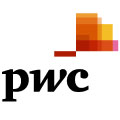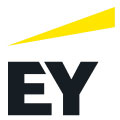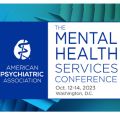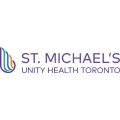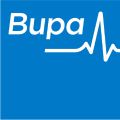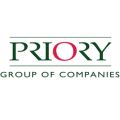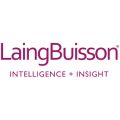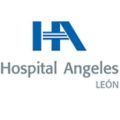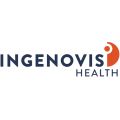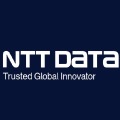Index
GAO Helps Customers Comply with Standards, Mandates & Regulations of Psychiatric and Substance Abuse Hospitals Industry
GAO’s Software Provides Easy Integration with API.
Case Studies of RFID Applications.
GAO RFID Systems & Hardware for Psychiatric and Substance Abuse Hospitals Industry.
GAO makes efforts to satisfy customers
GAO Has Served Psychiatric and Substance Abuse Hospitals Industry
Overview
The Psychiatric and Substance Abuse Hospitals industry encompasses facilities that specialize in providing medical treatment and care for individuals dealing with mental health disorders and substance abuse issues. These hospitals play a crucial role in diagnosing, treating, and supporting patients who are experiencing various forms of psychiatric illnesses, such as depression, anxiety, schizophrenia, bipolar disorder, and other mood disorders. Additionally, they offer services to those grappling with substance abuse and addiction, including alcohol, drugs, and other addictive substances. These hospitals typically offer a range of therapeutic interventions, including counselling, psychotherapy, medication management, detoxification, and rehabilitation programs tailored to the specific needs of each patient. The goal is to help patients manage their conditions, develop coping skills, and achieve a better quality of life. The facilities may offer both inpatient and outpatient services, depending on the severity of the condition and the treatment required.
GAO’s RFID, BLE, IoT, and drone technologies have helped its customers in Psychiatric and Substance Abuse Hospitals Industry to improve their work processes, their operations and productivity by better management of their staff, materials and operational equipment such as Examination tables, Blood pressure monitors, Thermometers, Stethoscopes, Otoscopes and ophthalmoscopes, EEG machines, EKG machines, Psychological assessment tools, Substance abuse screening tools, Counselling and therapy rooms with comfortable seating, Art therapy supplies, Music therapy instruments, Biofeedback equipment, Virtual reality (VR) therapy setups, Medication administration equipment, Monitoring cameras, Alarms and alert systems, Restraint and seclusion equipment, Medication dispensing carts, Medication storage units with controlled access, Recreational therapy supplies, Relaxation and meditation rooms.
Ranked as one of the top 10 global RFID suppliers, GAO RFID Inc. is based in New York City, U.S. and Toronto, Canada. GAO offers a comprehensive selection of UHF, HF (including NFC) and LF RFID (radio frequency identification) readers and tags, BLE (Low Energy Bluetooth) gateways and beacons, and various RFID and BLE systems such as people tracking, asset tracking, access control, parking control, fleet management, WIP (work in progress), traceability. Such RFID and BLE products and systems, as well as its IoT and drone technologies, have been successfully deployed for Psychiatric and Substance Abuse Hospitals Industry. Its sister company, GAO Tek Inc.
The targeted markets of both GAO RFID Inc. and GAO Tek Inc. are North America, particularly the U.S., Canada, Mexico, and Europe. As a result, this website gaorfid.com is offered in English and other major languages of North America and Europe such as Spanish, French, German, Italian, Polish, Ukrainian, Romanian, Russian, Dutch, Turkish, Greek, Hungarian, Swedish, Czech, Portuguese, Serbian, Bulgarian, Croatian, Danish, Finnish, Norwegian, Slovak, Catalan, Lithuanian, Bosnian, Galician, Slovene, Latvian, Estonian, Welsh, Icelandic, and Irish.
Applications & Benefits of GAO’s RFID, BLE, IoT & Drones for Psychiatric and Substance Abuse Hospitals Industry
To satisfy its customers, GAO’s RFID or RFID Systems for Historical Sites Industry are offered in 2 versions. One version is that its software is running on a local server that normally is on our client’s premise, and another version runs in the cloud. The cloud server could be GAO’s cloud server, client’s own cloud server or a cloud server from one of the leading cloud server providers such as Amazon Web Services (AWS), Microsoft Azure, Google Cloud, IBM Cloud (formerly SoftLayer), Oracle Cloud, RedHat, Heroku, Digital Ocean, CloudFlare, Linode and Rackspace. The above illustrates GAO system for sub-industry with its software running on a local server.
The above illustrates GAO system for Historical Sites Industry with its software running in cloud.
GAO’s RFID and BLE technologies, consisting of RFID readers, RFID tags, BLE gateways, BLE beacons, software, cloud services and their systems, have the following applications in Historical Sites industry:
- Visitor Access and Admission Control: RFID-enabled tickets or wristbands can streamline entry processes, reducing waiting times and enhancing security.
- Guided Tours: RFID tags in exhibits and points of interest can trigger audio guides or multimedia presentations on visitors’ devices, offering personalized and interactive tours.
- Interactive Exhibits: RFID-enabled interactive displays can provide detailed information when visitors interact with objects, encouraging engagement and learning.
- Augmented Reality (AR) Enhancements: Combining RFID with AR technology, visitors can access historical reconstructions, animations, and additional content related to artifacts.
- Artifact Tracking and Management: RFID tags can be attached to artifacts, enabling efficient inventory management, tracking, and preventing theft or loss.
- Conservation Monitoring: RFID-enabled sensors can help monitor temperature, humidity, and light levels to ensure optimal preservation conditions for delicate artifacts.
- Queue Management: RFID-based systems can manage visitor flows, reducing overcrowding and ensuring a smoother experience during peak times.
- Interactive Workshops and Activities: RFID tags can enable hands-on workshops and activities, providing visitors with interactive learning experiences.
- Personalized Experiences: RFID technology can facilitate personalized content delivery, tailoring information to visitors’ interests and preferences.
- Cultural Exchange and Language Translation: RFID-enabled devices can offer translations of exhibit information, enhancing accessibility for international visitors
- Digital Souvenirs: Visitors can use RFID-equipped devices to collect digital souvenirs, photos, or information during their visit.
- Event and Program Management: RFID can assist in managing events, workshops, and performances by tracking attendance and managing access to different areas.
- Feedback and Engagement: RFID systems can gather feedback from visitors, allowing historical sites to continually improve their offerings.
- Emergency Response: RFID-enabled systems can aid emergency response teams in identifying and locating visitors during evacuations.
- Educational Initiatives: RFID technology can support educational programs by tracking student participation and engagement in various activities.
- Membership and Loyalty Programs: RFID cards or devices can be used for membership identification and loyalty programs, offering special benefits to frequent visitors.
- Cafeteria and Gift Shop Transactions: RFID-based payment systems can streamline transactions in on-site amenities, improving convenience for visitors.
- Archaeological Excavation Management: RFID tags can be used to label and catalog artifacts during archaeological digs, improving the accuracy of data collection.
GAO’s drone technologies find the following applications in the Historical Sites industry:
- Smart Lighting: IoT-enabled lighting systems can adjust brightness and color temperature based on occupancy and time of day, enhancing the ambiance while conserving energy.
- Environmental Monitoring: IoT sensors can track temperature, humidity, air quality, and light levels to ensure optimal preservation conditions for artifacts and structures.
- Security and Surveillance: IoT cameras and sensors can provide real-time monitoring of historical sites, helping prevent vandalism, theft, or unauthorized access.
- Predictive Maintenance: IoT devices can monitor the structural integrity of buildings and monuments, predicting maintenance needs and preventing deterioration.
- Visitor Tracking and Analytics: IoT systems can analyze visitor movements to optimize exhibit layouts, understand traffic patterns, and improve the overall visitor experience.
- Energy Management: IoT-based systems can regulate heating, cooling, and other energy-consuming systems to minimize waste and reduce operating costs.
- Smart Signage: IoT-enabled signs can dynamically update information, direct visitors, and even provide translations based on user preferences.
- Audio Guides and Interpretive Content: IoT devices can provide location-based audio guides and multimedia content to enhance visitor engagement and education.
- Virtual Reality (VR) and Augmented Reality (AR) Enhancements: IoT can integrate with VR/AR applications, offering immersive experiences and historical reconstructions.
- Emergency Response Systems: IoT can aid in emergency response by providing real-time data on occupancy, guiding evacuations, and improving coordination.
- Asset Tracking: IoT-enabled tags can track the movement of artifacts, ensuring their location is known at all times and preventing loss or theft.
- Tourist Flow Management: IoT systems can monitor and manage visitor flows to prevent overcrowding and enhance the overall visitor experience.
- Cultural Heritage Preservation: IoT sensors can monitor the condition of artifacts, sculptures, and structures, alerting authorities to any changes that might require attention.
- Waste Management: IoT-enabled bins can monitor fill levels and optimize waste collection routes, reducing operational costs and environmental impact.
- Public Engagement: IoT can facilitate interactive displays, encourage user-generated content, and gather feedback to improve site offerings.
- Automated Audiovisual Presentations: IoT can trigger audiovisual presentations, lighting effects, or animations based on visitor proximity or scheduled events.
- Historical Data Collection: IoT devices can gather data about visitor interactions, preferences, and demographics, aiding in historical and sociocultural research.
- Remote Monitoring: IoT systems enable remote monitoring and management of historical sites, allowing staff to respond to issues quickly.
- Exhibit Conservation: IoT sensors can monitor factors like light exposure and temperature, alerting curators if conditions exceed safe thresholds.
- Interconnected Amenities: IoT can enable efficient management of amenities such as restrooms, cafes, and gift shops, improving convenience for visitors.
GAO’s Assists Clients with Standards, Mandates & Regulations of Psychiatric and Substance Abuse Hospitals Industry
GAO RFID Inc. has developed its products and systems in compliance with industry standards and mandates. GAO has assisted our customers in Psychiatric and Substance Abuse Hospitals Industry to deploy RFID, BLE, IoT and drone systems and to ensure such deployments complying with applicable industry standards, U.S. government regulations and Canadian government regulations such as:
RFID, BLE, IoT, & Drone Standards & Mandates
- ISO/IEC 18000-2:2004
- ISO/IEC 18000-63:2006
- EPCglobal UHF Gen2
- Bluetooth SIG Specification Version 5.0
- Bluetooth SIG Specification Version 5.1
- MQTT
- CoAP
- IETF RFC 6690
- ASTM F3323
- ISO 23288
- FAA Part 107
- The Joint Commission
- The Centers for Medicare & Medicaid Services (CMS)
- The Food and Drug Administration (FDA)
US Government Regulations
- 42 CFR Part 482
- 42 CFR Part 8
- 42 CFR Part 2
- HIPAA
- ADA
- OBRA
- SAMHSA
- CMS
- Patient Rights
- Staff Training
- Quality Assurance
- Insurance Reimbursement
- Accreditation
- Licensing
Canadian Government Regulations
- Canada Health Act
- Mental Health Act
- Substance Abuse and Mental Health Services Act
- Health Canada
- Provincial and Territorial Governments
- Bill C-14
- The Code of Conduct for Health Facilities
- The Canadian Patient Safety Institute
- The Mental Health Commission of Canada
- The Canadian Psychiatric Association
GAO Software Provides Easy Integration with API
GAO’s RFID and BLE software offers a free trial for both the server-based and cloud versions, and offers an API to the important systems in Spring and Wire Product Manufacturing such as:
Personnel Management:
- HRIS (Human Resource Information System)
- Training and Certification Tracking
- Performance Management
- Safety Compliance
Equipment Management:
- Predictive Maintenance
- Asset Tracking
- Inventory Management
- Energy Management
Access Control:
- Biometric Access Control
- Access Logs and Auditing
- Visitor Management
Warehouse Management:
- Inventory Tracking
- Order Fulfillment
- Space Optimization
- Quality Control
Supply Chain Management:
- Supplier Relationship Management (SRM)
- Demand Forecasting
- Transportation Management
- Just-in-Time (JIT) Manufacturing
Other Applications:
- Compliance and Regulatory Tracking
- Quality Management Systems (QMS):
- Customer Relationship Management (CRM)
- Data Analytics and Business Intelligence
GAO has enabled its customers to make use of some of the leading software and cloud services in Spring and Wire Product Manufacturing industry. Below are some of popular software and cloud services in Spring and Wire Product Manufacturing:
Workday HCM, Oracle HCM Cloud, ADP Workforce Now, BambooHR, UltiPro, Kronos Workforce Central, Paylocity, Zenefits, Gusto, IBM Maximo, Infor EAM, Fiix, UpKeep, Asset Panda, eMaint, Maintenance Connection, MPulse, Hippo CMMS, Limble CMMS, BambooHR, Gusto, Zenefits, ADP Workforce Now, Workday, Paychex, Namely, Paycom, QuickBooks Payroll, Kronos Workforce Ready, IBM Maximo, Infor EAM, UpKeep, Fiix, Asset Panda, eMaint, Limble CMMS, ManagerPlus, MaintiMizer, MPulse, Honeywell Access Control, LenelS2 OnGuard, Brivo Access Control, AMAG Technology Symmetry, Paxton Access Control, RS2 Access Control, Kisi, Avigilon Access Control, Identiv, Gallagher Command Centre, Manhattan Associates WMS, Oracle WMS Cloud, HighJump Warehouse Management, JDA Warehouse Management, SAP Extended Warehouse Management (EWM), Infor CloudSuite WMS, Fishbowl Inventory.
GAO has worked with some of the leading technology companies in Spring and Wire Product Manufacturing to provide integrated its RFID, BLE, IoT and drone solutions to customers. Here are some of the technology leaders in Spring and Wire Product Manufacturing:
IBM, Microsoft, Oracle, SAP, Salesforce, Cisco Systems, Hewlett Packard Enterprise (HPE), Dell Technologies, Accenture, Cognizant. Intel, NVIDIA, Texas Instruments, Analog Devices, Broadcom Inc., STMicroelectronics, Microchip Technology, NXP Semiconductors, Infineon Technologies, ON Semiconductor. Siemens, Rockwell Automation, ABB, Schneider Electric, Emerson Electric, Mitsubishi Electric, Omron Corporation, Yokogawa Electric, Honeywell, Fanuc.
Case Studies of RFID, IoT & Drone Applications
Case Studies of RFID Applications
Below are some RFID application cases in Psychiatric and Substance Abuse Hospitals Industry.
Alexandra and National University Hospitals Fighting SARS, Singapore, this case study describes how RFID technology was used to track the movement of patients and staff during the SARS outbreak in Singapore. The RFID tags were attached to patient wristbands and staff identification badges. This allowed the hospital to track the movement of patients and staff and identify potential exposure to SARS.
Alzheimer’s Association, USA This case study describes how RFID technology was used to track the location of patients with Alzheimer’s disease. The RFID tags were attached to patient wristbands. This allowed the caregivers to track the location of patients and prevent them from wandering off.
AstraZeneca Diprivan error prevention, UK. This case study describes how RFID technology was used to prevent medication errors. The RFID tags were attached to medication vials. This allowed the pharmacists to track the movement of medication vials and prevent them from being dispensed to the wrong patient.
Baptist Health automated dispensing, this case study describes how RFID technology was used to automate the dispensing of medication. The RFID tags were attached to medication vials. This allowed the automated dispensing machines to dispense the correct medication to the correct patient.
Bon Secours Group, hospital assets, this case study describes how RFID technology was used to track the movement of hospital assets. The RFID tags were attached to assets such as IV pumps and wheelchairs. This allowed the hospital to track the location of assets and prevent them from being lost or stolen.
CareCross, medical and dental network providers and managed-care patients, South Africa, this case study describes how RFID technology was used to track the movement of patients in a medical and dental network. The RFID tags were attached to patient wristbands. This allowed the network to track the location of patients and ensure that they were receiving the correct care.
City halls, healthcare facilities guiding the blind, Japan, this case study describes how RFID technology was used to guide blind people in healthcare facilities. The RFID tags were attached to walls and other objects in the facility. This allowed the blind people to use a handheld RFID reader to navigate the facility.
Doctors’ Hospital of Dallas, security on neonatal wards, this case study describes how RFID technology was used to improve security on neonatal wards. The RFID tags were attached to baby bracelets. This allowed the nurses to track the location of babies and prevent them from being taken from the ward.
Hospital de Especialidades Pediátricas, medication tracking, Mexico, this case study describes how RFID technology was used to track the movement of medication in a paediatric hospital. The RFID tags were attached to medication vials. This allowed the hospital to track the location of medication and prevent medication errors.
Instituto Nacional de Rehabilitación, patient monitoring, Mexico, this case study describes how RFID technology was used to monitor the movement of patients in a rehabilitation institute. The RFID tags were attached to patient wristbands. This allowed the institute to track the location of patients and prevent them from wandering off.
French Blood Agency chemo vigilance, France, this case study describes how RFID technology was used to improve the safety of blood transfusions. The RFID tags were attached to blood bags. This allowed the blood agency to track the movement of blood bags and prevent blood transfusions from being given to the wrong patient.
French Hospitals & Ambulance Services, patient care, France, this case study describes how RFID technology was used to improve the quality of patient care. The RFID tags were attached to patient wristbands. This allowed the hospitals and ambulance services to track the location of patients.
Many applications of RFID by GAO can be found here
https://gaorfid.com/healthcare-rfid-solutions/
Case Studies of IoT Applications
Below are some IoT application cases in Psychiatric and Substance Abuse Hospitals Industry.
Bridgeway Behavioural Health, fall prevention. This case study describes how IoT technology was used to prevent falls in a psychiatric hospital. The IoT sensors were placed on the floors and walls of the hospital. This allowed the hospital to monitor the movement of patients and staff and identify potential fall risks.
The Retreat at Sheppard Pratt, patient monitoring: This case study describes how IoT technology was used to monitor the condition of patients in a psychiatric hospital. The IoT sensors were placed on patients’ beds and other equipment. This allowed the hospital to monitor the patients’ vital signs and other data in real time.
Veritas Collaborative, medication management, this case study describes how IoT technology was used to improve medication management in a psychiatric hospital. The IoT sensors were placed on medication cabinets and other equipment. This allowed the hospital to track the movement of medication and prevent medication errors.
Alberta Children’s Hospital, patient tracking, this case study describes how IoT technology was used to track the location of patients in a paediatric psychiatric hospital. The IoT sensors were placed on patients’ wristbands. This allowed the hospital to track the location of patients and prevent them from wandering off.
Mount Sinai Hospital, fall prevention, this case study describes how IoT technology was used to prevent falls in a geriatric psychiatric hospital. The IoT sensors were placed on the floors and walls of the hospital. This allowed the hospital to monitor the movement of patients and staff and identify potential fall risks.
St. Michael’s Hospital, patient engagement, this case study describes how IoT technology was used to engage patients in their care in a psychiatric hospital. The IoT sensors were placed on patients’ beds and other equipment. This allowed the hospital to send patients reminders about their appointments and medications, and to collect feedback from patients about their care.
Centro de Salud Mental, medication tracking, this case study describes how IoT technology was used to track the movement of medication in a mental health clinic. The IoT sensors were placed on medication cabinets and other equipment. This allowed the clinic to track the movement of medication and prevent medication errors.
Instituto Nacional de Psiquiatría Ramón de la Fuente Muñiz, patient monitoring, this case study describes how IoT technology was used to monitor the condition of patients in a psychiatric institute. The IoT sensors were placed on patients’ beds and other equipment. This allowed the institute to monitor the patients’ vital signs and other data in real time.
University College London Hospitals, patient tracking, this case study describes how IoT technology was used to track the location of patients in a psychiatric hospital. The IoT sensors were placed on patients’ wristbands. This allowed the hospital to track the location of patients and prevent them from wandering off.
University of Oxford Hospitals, medication management, this case study describes how IoT technology was used to improve medication management in a psychiatric hospital. The IoT sensors were placed on medication cabinets and other equipment. This allowed the hospital to track the movement of medication and prevent medication errors.
Case Studies of Drone Applications
Below are some drone application cases in Psychiatric and Substance Abuse Hospitals Industry.
Northwell Health, medication delivery, this case study describes how drones were used to deliver medication to patients in a psychiatric hospital. The drones were equipped with thermal cameras and sensors that allowed them to navigate the hospital safely. This allowed the hospital to improve medication compliance and reduce the risk of medication errors.
Wake Forest Baptist Health, patient transport, this case study describes how drones were used to transport patients between different parts of a psychiatric hospital. The drones were equipped with stretchers and other medical equipment. This allowed the hospital to improve patient safety and reduce the risk of falls.
University of Pennsylvania, security, this case study describes how drones were used to improve security at a psychiatric hospital. The drones were equipped with cameras that allowed them to monitor the hospital grounds 24/7. This allowed the hospital to identify potential security threats and prevent incidents.
Sunnybrook Health Sciences Centre, delivery of supplies, this case study describes how drones were used to deliver supplies to remote areas of a psychiatric hospital. The drones were equipped with thermal cameras and sensors that allowed them to navigate the hospital safely. This allowed the hospital to improve efficiency and reduce the risk of injuries to staff.
McMaster University, research, this case study describes how drones were used to conduct research on the use of drones in psychiatric hospitals. The drones were equipped with cameras and sensors that allowed them to collect data on the movement of patients and staff. This data was used to improve the design of hospitals and the delivery of care.
Instituto Nacional de Psiquiatría Ramón de la Fuente Muñiz, delivery of supplies, this case study describes how drones were used to deliver supplies to remote areas of a psychiatric institute. The drones were equipped with thermal cameras and sensors that allowed them to navigate the institute safely. This allowed the institute to improve efficiency and reduce the risk of injuries to staff.
Universidad Nacional Autónoma de México, patient monitoring, this case study describes how drones were used to monitor the condition of patients in a university psychiatric hospital. The drones were equipped with cameras and sensors that allowed them to track the patients’ movements and vital signs. This allowed the hospital to intervene early in case of an emergency.
Centro de Salud Mental, research, this case study describes how drones were used to conduct research on the use of drones in mental health clinics. The drones were equipped with cameras and sensors that allowed them to collect data on the movement of patients and staff. This data was used to improve the design of clinics and the delivery of care.
GAO RFID Systems & Hardware for Psychiatric and Substance Abuse Hospitals Industry.
GAO RFID Inc. offers the largest selection of BLE gateways, BLE beacons, RFID readers, tags, antenna, printers, and integrated RFID systems for various industries, including apparel, piece goods, and notions merchant wholesalers.
BLE (Bluetooth Low Energy)
GAO offers advanced BLE gateways:
- BLE (Bluetooth Low Energy)
As well as versatile beacons with such important functions as temperature, humility, vibration, and panic button:
- GAO RFID Beacons
GAO’s BLE technology is suitable for many industries, including apparel, piece goods, and notions merchant wholesalers.
UHF (Ultra High Frequency) RFID
GAO offers the largest selection of UHF RFID readers for various industries, including apparel, piece goods, and notions merchant wholesalers:
GAO RFID offers the widest choice of UHF RFID tags, labels, badges, wristbands for various industries, including apparel, piece goods, and notions merchant wholesalers:
And an array of antennas to address different applications:
HF (High Frequency), NFC (Near Field Communications) and LF (Low Frequency) RFID
GAO offers the largest selection of HF, NFC, and LF RFID readers for various industries, including apparel, piece goods, and notions merchant wholesalers:
- high-frequency-13-56-mhz-rfid-readers
- high-frequency-134-khz-rfid-readers
- low-frequency-125-khz-rfid-readers
HF, NFC and LF RFID tags, labels, badges, wristbands for various industries, including apparel, piece goods, and notions merchant wholesalers:
And antennas:
GAO also offers RFID printers:
Digital I/O adapters:
And relay controllers:
For embedded applications, GAO offers UHF, HF and LF RFID reader modules:
- uhf-860-960-mhz-rfid-modules
- 13-56-mhz-high-frequency-rfid-modules
- 125-khz-low-frequency-rfid-modules
The RFID systems by GAO are highly popular for clients in apparel, piece goods, and notions merchant wholesalers:
Physical asset or operational equipment tracking system:
Assets that can be effectively tracked using GAO’s technologies include.
- RFID Tagging Systems: RFID tagging systems are used to attach RFID tags to apparel, piece goods, and notions. These tags contain unique identification information that can be read by RFID readers, enabling efficient inventory management and tracking.
- Barcode Scanners: Barcode scanners are commonly used in the apparel industry to scan barcodes on products, price tags, and shipping labels. They provide accurate and fast data capture, facilitating inventory control, pricing, and order processing.
- Handheld Mobile Devices: Handheld mobile devices such as smartphones or tablets equipped with inventory management software are used by apparel wholesalers for on-the-go inventory tracking, order processing, and communication with suppliers and customers.
- Point of Sale (POS) Systems: POS systems are essential equipment for apparel wholesalers. These systems include hardware like cash registers, barcode scanners, and receipt printers, along with software that enables sales transactions, inventory management, and customer tracking.
- Shelving and Racking Systems: Shelving and racking systems are used to organize and store apparel, piece goods, and notions in warehouses and distribution centers. They provide efficient space utilization and easy access to products for picking and packing.
- Conveyor Systems: Conveyor systems are used to transport apparel items, piece goods, and notions within warehouses and distribution centers. They automate the movement of products, reducing manual handling and improving operational efficiency.
People or workers tracking system:
- PERSONNEL TRACKING SOFTWARE
Physical asset or operational equipment tracking system:
- ASSET TRACKING SOFTWARE
Personnel or people access control system:
- ACCESS CONTROL SOFTWARE
Parking or vehicle control system:
- PARKING CONTROL SOFTWARE
GAO Makes Efforts to Satisfy Customers
Large Choice of Products
In order to satisfy the diversified needs of their corporate customers, GAO RFID Inc. and its sister company GAO Tek Inc. together offer a wide choice of RFID, BLE, IoT, drones, testing and measurement devices, and network products.
Overnight Delivery
In order to shorten the delivery to our customers, GAO has maintained a large stock of its products and is able to ship overnight within continental U.S. and Canada, and fast delivery to anywhere in Mexico and Europe from the nearest warehouse.
Local to Our Customers
We are located in both the U.S. and Canada. We travel to customers’ premises if necessary. Hence, we provide a very strong local support to our customers in North America, particularly the U.S., Canada and Mexico, and Europe. Furthermore, we have built partnerships with some integrators, consulting firms and other service providers in different cities to further strengthen our services. Here are some of the service providers in Historical Sites industry we have worked with to serve our joint customers:
- Industry Associations
- Networking
- Online Research
- Accenture
- Deloitte
- Capgemini
- Cognizant
- IBM Global Business Services
- PwC (PricewaterhouseCoopers)
- EY (Ernst & Young)
- Infosys
- Wipro
- Tata Consultancy Services (TCS)
- Compugen
- Long View Systems
- Softchoice
- Sierra Systems
- Scalar
- CGI
- ProServeIT
- OnX Canada
- Inlanta Technologies
- i. Systems
- Neoris
- Softtek
- KIO Networks
- UST Global
- Grupo Carso
- Telvista
- Grupo Quimmco
- Megacable
- Origo Solutions
- Binbit
- Atos
- Sopra Steria
- Devoteam
- TietoEVRY
- NTT DATA
- DXC Technology
- Wipro
GAO Has Served Psychiatric and Substance Abuse Hospitals Industry Extensively
GAO RFID Inc. and its sister company GAO Tek Inc. together offer a wide choice of RFID, BLE, IoT, drone, testing and measurement devices, and network products.
GAO’s products and technologies have helped its customers in Psychiatric and Substance Abuse Hospitals Industry to achieve success in Telehealth and Telepsychiatry, Digital Therapeutics, Data Analytics and AI, Mobile Apps for Mental Health, Integrated Care, Personalized Treatment, Patient Engagement, Community-Based Care, Crisis Intervention Technology, Digital Records and Interoperability. These trends and buzzwords highlight the industry’s focus on technology integration, patient-centered approaches, and innovative solutions for mental health treatment and care.
GAO RFID Inc. has served many customers in Psychiatric and Substance Abuse Hospitals Industry , including its various divisions such as
- Inpatient Psychiatric Hospitals: Facilities that provide intensive 24-hour care for individuals experiencing severe mental health crises, often requiring hospitalization and structured treatment.
- Outpatient Behavioral Health Clinics: Centers that offer non-residential care for individuals with mental health and substance abuse concerns, providing therapy, counseling, and medication management on an outpatient basis.
- Dual Diagnosis Treatment Centers: Specialized facilities that focus on treating individuals who have both a mental health disorder and a substance abuse issue, providing integrated care for these co-occurring conditions.
- Addiction Treatment Centers: Facilities that specialize in addressing substance abuse and addiction, offering detoxification, rehabilitation, counseling, and support services.
- Partial Hospitalization Programs (PHPs): Day programs that offer intensive treatment for individuals who require more care than traditional outpatient services but less than inpatient care.
- Intensive Outpatient Programs (IOPs): Structured programs providing therapy and support for individuals needing more than standard outpatient care but not requiring 24-hour inpatient treatment.
- Residential Treatment Centers: Facilities that offer longer-term residential care for individuals with severe mental health or substance abuse disorders, providing a structured environment for healing and recovery.
- Youth and Adolescent Mental Health Facilities: Specialized centers that cater to the mental health and substance abuse needs of children, teenagers, and young adults.
- Eating Disorder Treatment Centers: Facilities that focus on the treatment of eating disorders, such as anorexia, bulimia, and binge eating disorder.
- Geriatric Psychiatric Hospitals: Centers that provide mental health care to elderly individuals facing issues like dementia, depression, and other late-life mental health concerns.
- Trauma and PTSD Treatment Centers: Specialized facilities that offer treatment for individuals who have experienced trauma or suffer from post-traumatic stress disorder (PTSD).
- Community Mental Health Centers: Organizations that provide mental health and substance abuse services within the community, often focusing on preventive care, counseling, and support.
GAO’s technologies enable its customers in “Residential building construction” to effectively track their workforces such as Psychiatrist, Psychologist, Therapist, Counselor, Social Worker, Nurse Practitioner (PMHNP), Registered Nurse (RN), Licensed Practical Nurse (LPN), Behavioral Health Technician, Addiction Counselor, Case Manager, Peer Support Specialist, Medical Director, Clinical Supervisor, Occupational Therapist, Recreational Therapist, Art Therapist, Music Therapist, Administrative Staff, Security Personnel. Respectively track operational assets such as Examination Tables, Blood Pressure Monitors, Thermometers, Stethoscopes, EKG Machines, EEG Machines, Medication Dispensing Carts, Medication Storage Units, Restraint and Seclusion Equipment, Therapy Seating, Communication Devices, Computers and EMR Systems, Intercom Systems, Monitoring Cameras, Privacy Screens, Recreational Therapy Supplies, Art Therapy Materials, Music Therapy Instruments, Biofeedback Equipment, Virtual Reality Therapy Setup, Exercise Equipment, Safety Alarms, Mobile Medication Carts, Detoxification Equipment, Patient Beds, Personal Protective Equipment (PPE), Filing Cabinets, Rehabilitation Tools, Patient Monitoring Systems, Telehealth Equipment.
Here are some of the leading companies in Psychiatric and Substance Abuse Hospitals Industry GAO has served:
- Acadia Healthcare
- Universal Health Services
- Kindred Healthcare
- The Recovery Centers of America
- Northeast Behavioural Health Associates
- Encompass Health
- Acadia Healthcare
- Universal Health Services
- Kindred Healthcare
- The Recovery Centers of America
- Acadia Healthcare
- Universal Health Services
- Kindred Healthcare
- The Recovery Centers of America
- Sierra Tucson
- Acadia Healthcare
- Universal Health Services
- Kindred Healthcare
- The Recovery Centers of America
- Springboard Health
- Revera Inc.
- Sunquest Cares
- The Centre for Addiction and Mental Health
- Alberta Health Services
- Ontario Shores Centre for Mental Health Sciences
- Grupo Hospitals Angeles
- Hospitales Star Médica
- Hospital San Javier
- Hospital Español de Mexico
- Centro Medico ABC
- Priory Group
- Ramsay Health Care
- Capio
- BUPA
- The Priory








